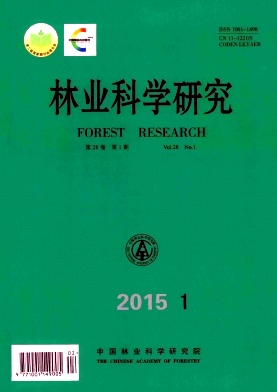|
[1]
|
王 强, 袁兴中, 刘 红, 等. 三峡水库初期蓄水对消落带植被及生物多样性的影响[J]. 自然资源学报, 2011,26 (10):1680-1693.
|
|
[2]
|
孙 荣, 袁兴中, 刘 红, 等.三峡水库消落带植物群落组成及物种多样性[J]. 生态学杂志, 2011, 30 (2):208-214.
|
|
[3]
|
王业春, 雷 波, 张 晟. 三峡库区消落带不同水位高程植被和土壤特征差异[J]. 湖泊科学, 2012, 24 (2):206-212.
|
|
[4]
|
刘维暐, 王 杰, 王 勇, 等. 三峡水库消落区不同海拔高度的植物群落多样性差异[J]. 生态学报, 2012, 32 (17):5454-5466.
|
|
[5]
|
郭泉水, 康 义, 洪 明, 等. 三峡库区消落带陆生植被对首次水陆生境变化的响应[J]. 林业科学, 2013, 49 (5):1-9.
|
|
[6]
|
常 杰. 生态学[M]. 北京: 高等教育出版社, 2010.
|
|
[7]
|
方精云, 沈泽昊, 唐志尧, 等. 中国山地植物物种多样性调查计划及若干技术规范[J]. 生物多样性, 2004, 12 (1):5-9,14.
|
|
[8]
|
孔凡洲, 于仁成, 徐子钧, 等. 应用 Excel 软件计算生物多样性指数[J]. 海洋科学, 2012, 36 (4):57-62.
|
|
[9]
|
马克平, 黄建辉, 于顺利, 等. 北京东灵山地区植物群落多样性的研究Ⅱ丰富度、均匀度和物种多样性指数[J]. 生态学报, 1995, 15 (3):268-277.
|
|
[10]
|
宋永昌. 植被生态学[M]. 上海: 华东师范大学出版社, 2002.
|
|
[11]
|
中国植被编辑委员会. 中国植被[M]. 北京: 科学出版社, 1983.
|
|
[12]
|
Whittaker R H. Evolution and measurement of species diversity[J]. Taxon, 1972, 21: 213-251. |
|
[13]
|
Magurran A E. Ecological diversity and its measurement[M]. New Jersey: Princeton University Press, 1988. |
|
[14]
|
Gaston K J. Global patterns in biodiversity[J]. Nature, 2000, 405: 220-226. |
|
[15]
|
李兆佳, 熊高明, 邓龙强, 等. 狗牙根与牛鞭草在三峡库区消落带水淹结束后的抗氧化酶活力[J]. 生态学报, 2013, 33 (11): 3362-3369.
|
|
[16]
|
Lyon J, Gross N M. Patterns of plant diversity and plant environmental relationships across three riparian corridors[J]. Forest Ecology and Management, 2005,204: 267-278. |
|
[17]
|
陈求稳, 欧阳志云. 流域生态学及模型系统[J]. 生态学报, 2005, 25 (5):1153-1161.
|
|
[18]
|
白宝伟, 王海洋, 李先源, 等.三峡库区淹没区与自然消落区现存植被的比较[J]. 西南农业大学学报, 2005, 27(5):684-691.
|
|
[19]
|
卢志军, 李连发, 黄汉东, 等. 三峡水库蓄水对消涨带植被的初步影响[J]. 武汉植物学研究, 2010, 28 (3):303-314.
|
|
[20]
|
王 欣, 高贤明. 模拟水淹对三峡库区常见一年生草本植物种子萌发的影响[J]. 植物生态学报, 2010, 34 (12):1404-1413.
|
|
[21]
|
王 勇, 吴金清, 黄宏文, 等. 三峡库区消涨带植物群落的数量分析[J]. 武汉植物学研究, 2004, 22(4):307-314.
|
|
[22]
|
Hopkins M S, Graham A W. The viability of seeds of rainforest species experimental soil burials under tropical wet lowland forest in north-eastern Australia[J]. Australian Journal of Ecology, 1987, 12 (2): 97-108. |
|
[23]
|
陶 敏, 鲍大川, 江明喜. 三峡库区9种植物种子萌发特性及其在植被恢复中的意义[J]. 生态学报, 2011, 31 (4):906-913.
|
|
[24]
|
王 强, 袁兴中, 刘 红, 等. 水淹对三峡水库消落带苍耳种子萌发的影响[J]. 湿地科学, 2011, 9(4):328-333.
|





 DownLoad:
DownLoad: